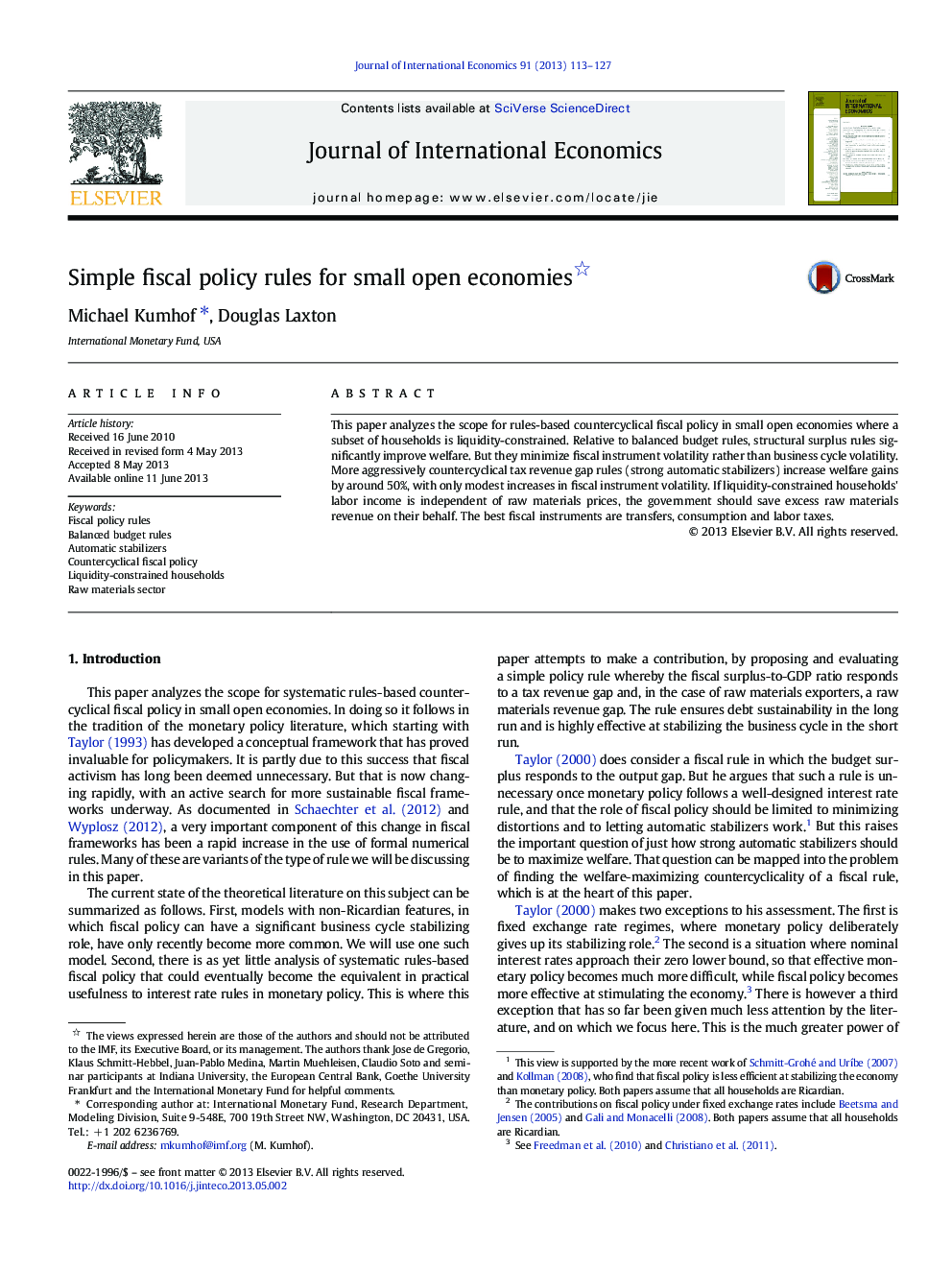| Article ID | Journal | Published Year | Pages | File Type |
|---|---|---|---|---|
| 962968 | Journal of International Economics | 2013 | 15 Pages |
Abstract
This paper analyzes the scope for rules-based countercyclical fiscal policy in small open economies where a subset of households is liquidity-constrained. Relative to balanced budget rules, structural surplus rules significantly improve welfare. But they minimize fiscal instrument volatility rather than business cycle volatility. More aggressively countercyclical tax revenue gap rules (strong automatic stabilizers) increase welfare gains by around 50%, with only modest increases in fiscal instrument volatility. If liquidity-constrained households' labor income is independent of raw materials prices, the government should save excess raw materials revenue on their behalf. The best fiscal instruments are transfers, consumption and labor taxes.
Related Topics
Social Sciences and Humanities
Economics, Econometrics and Finance
Economics and Econometrics
Authors
Michael Kumhof, Douglas Laxton,
